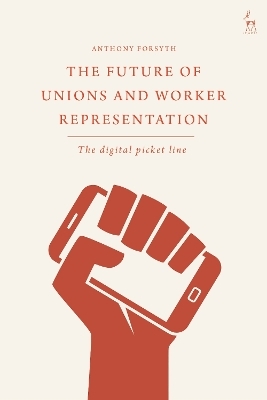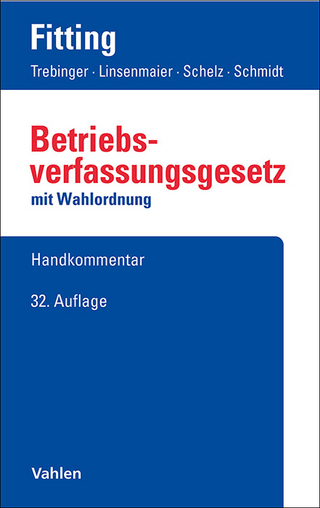
The Future of Unions and Worker Representation
Hart Publishing (Verlag)
978-1-5099-5643-2 (ISBN)
The study evaluates the responses of unions in each country to falling membership levels since the 1980s. It considers the US ‘organising model’ and its adoption in Australia and the UK, comparing this with the strategies of Italian unions which have been more deliberately focused on precarious and migrant workers. The increasing reliance of US unions on community alliances, as seen in the ‘Fight for $15’ and similar campaigns, is scrutinised along with new union prototypes like Hospo Voice in Australia, the Independent Workers’ Union of Great Britain and SI Cobas in Italy. The book includes an in-depth analysis of union responses to the gig economy in the four countries, and the emergence of self-organised worker collectives to combat this exploitative business model. The vital role played by unions in defending the interests of workers during the COVID-19 pandemic is also examined.
As well as highlighting the most successful union initiatives to meet the challenges of the past 30 years, the book assesses the strengths and deficiencies of the legal framework for union representation in the four nations. It identifies the labour law reforms needed to rebuild collectivism, but argues that more is needed than favourable laws. This cross-national study provides a rich basis for identifying the combination of reforms, strategies and linkages required to ensure that unions can remain relevant for a new generation of digitally-active workers.
Anthony Forsyth is Professor of Workplace Law at RMIT University, Melbourne, Australia.
1. Introduction
I. Unionising Big Tech
II. Aims and Scope
III. Why Compare the USA, the UK, Australia and Italy?
IV. Chapter Overview
V. The Digital Picket Line
2. A Snapshot of Union Decline in the Four Countries
I. Introduction
II. Challenging Times for Trade Unions in the USA, the UK and Australia
III. The Differing Trajectory of Union Membership and Worker Representation in Italy
IV. Conclusion
3. The Legal Framework for Unions and Worker Representation in the Four Countries
I. Introduction
II. The USA
III. The UK
IV. Australia
V. Italy
VI. Conclusion
4. Unions in the USA: From the Organising Model to Alt-Labour
I. Introduction
II. The AFL-CIO Organising Model
III. Change to Win
IV. Unions Bypass the Broken NLRA Process
V. Looking Further Afield: Unions in the Community, Alt-Labour and Bargaining for the Common Good
VI. A (Seemingly) Lost Cause: Unions and Labour Law Reform
VII. Conclusion
5. Australian Unions: From the Accord to ‘Change the Rules’
I. Introduction
II. Early 1990s: The Legacy of the Accord
III. Adopting the Organising Model
IV. Campaigning for Legal Change: Ending Work Choices and the Return of a Labor Government
V. Unions on the Defensive again as the Coalition Returns to Government
VI. Union Decline Intensifies, Spawning Exploration of New Membership Models
VII. The ‘Change the Rules’ Campaign and its Aftermath
VIII. Conclusion
6. Australian Unions: Innovations, Amalgamations and Organising Beyond the Workplace
I. Introduction
II. New Union Models and Digital Prototypes
III. Back to the Future: A New Wave of Union Mergers
IV. Campaigning and Organising Beyond the Workplace
V. Conclusion
7. The UK: From ‘New Unionism’ to Indy and Digital Unions
I. Introduction
II. The UK Variant of Organising
III. ‘Third Way’ Unionism: The Partnership Agenda
IV. Back into the Wilderness: Unions Confront Austerity, Brexit and the Legacy of New Labour
V. Up for a Scrap: Social Movements, ‘Indy Unions’ and #McStrike
VI. ‘An Alternative to Simply not being Present’: New Membership Models and Digital Experiments
VII. Conclusion
8. Italian Unions: Fighting for the Marginalised
I. Introduction
II. Specialist Unions for Precarious Workers – And Challenging Agency Work
III. Italian Unions and Migrant Workers
IV. Building (Rank-and-File) Union Strength in the Logistics Sector
V. Conclusion
9. Unions and the Gig Economy: Advocacy, Campaigning, Mobilising
I. Introduction
II. Overview of the Gig Economy in the Four Countries
III. The Mirage of Liberating Work in the Gig Economy
IV. Enter, the Unions …
V. Exposing the Reality of Gig Work as a Basis for Advocacy, Campaigning and Mobilising
VI. Conclusion
10. Unions and the Gig Economy: Misclassification Test Cases and Collective Bargaining
I. Introduction
II. ‘Litigating the Digital Platform Model’: Legal Challenges to the Misclassification of Gig Workers
III. ‘Staying United to Reverse the Race to the Bottom’: Collective Bargaining in the Gig Economy
IV. Conclusion
11. What is the Future of Unions and Worker Representation? What Changes are Needed in Labour Laws?
I. Introduction
II. A Pathway to Union Revitalisation
III. Reforming Labour Law to Empower Workers and Unions to Win
IV. Conclusion
12. The COVID-19 Pandemic: The Undeniable Case for Unions
I. Introduction
II. Union Involvement in National Responses to the COVID-19 Emergency
III. Income Protection
IV. Protecting Workers’ Safety
V. Conclusion: Implications of the Pandemic for Trade Unions
| Erscheinungsdatum | 07.02.2022 |
|---|---|
| Verlagsort | Oxford |
| Sprache | englisch |
| Maße | 156 x 234 mm |
| Themenwelt | Recht / Steuern ► Allgemeines / Lexika |
| Recht / Steuern ► Arbeits- / Sozialrecht ► Arbeitsrecht | |
| Recht / Steuern ► EU / Internationales Recht | |
| ISBN-10 | 1-5099-5643-3 / 1509956433 |
| ISBN-13 | 978-1-5099-5643-2 / 9781509956432 |
| Zustand | Neuware |
| Informationen gemäß Produktsicherheitsverordnung (GPSR) | |
| Haben Sie eine Frage zum Produkt? |
aus dem Bereich


